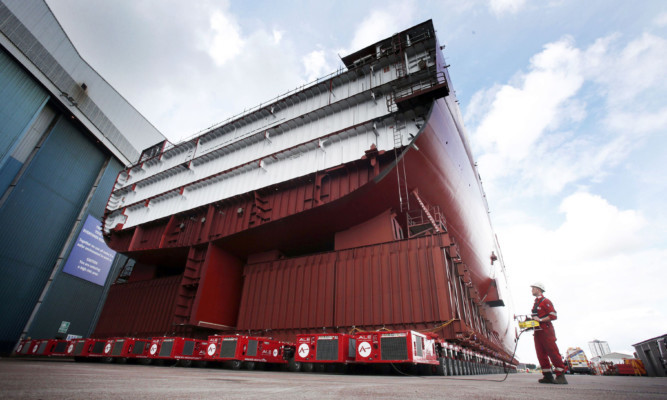An 11,000-tonne section of one of the Royal Navy’s under-construction aircraft carriers has been moved out of its dock hall for the first time.
The largest section of HMS Prince of Wales was driven out of the hall at the BAE Systems Govan shipyard at 1mph using nearly 2,000 wheels and a single remote control.
Over the weekend the large hull section will be moved on to a barge, where it will remain until late August when it will set off on a sea journey around the north of Scotland and down to Rosyth in Fife for assembly.
The Aircraft Carrier Alliance began construction work on the structure at Govan in December 2013.
HMS Prince of Wales is the second Queen Elizabeth Class aircraft carrier being built for the Royal Navy.
Its sister ship, HMS Queen Elizabeth, was the first to begin construction and could have jets flying off it by the end of 2018.
Those behind the project, which is estimated to cost more than £6 billion overall, say the QE Class will be the centrepiece of Britain’s naval capability.
Each 65,000-tonne aircraft carrier will provide the armed forces with a four-acre military operating base which can be deployed worldwide.
The vessels are designed to be versatile enough to support war efforts or provide humanitarian aid and disaster relief.
